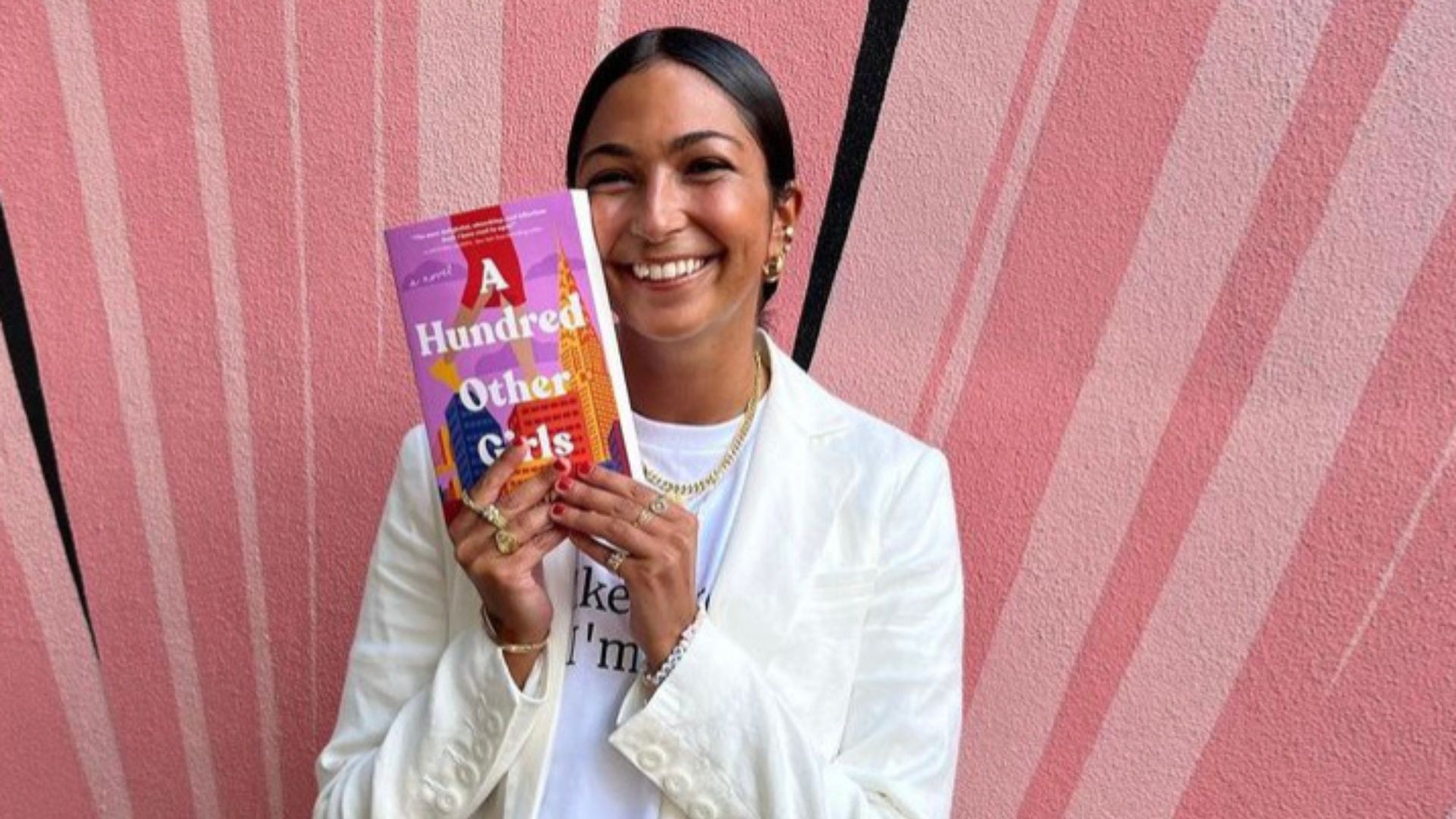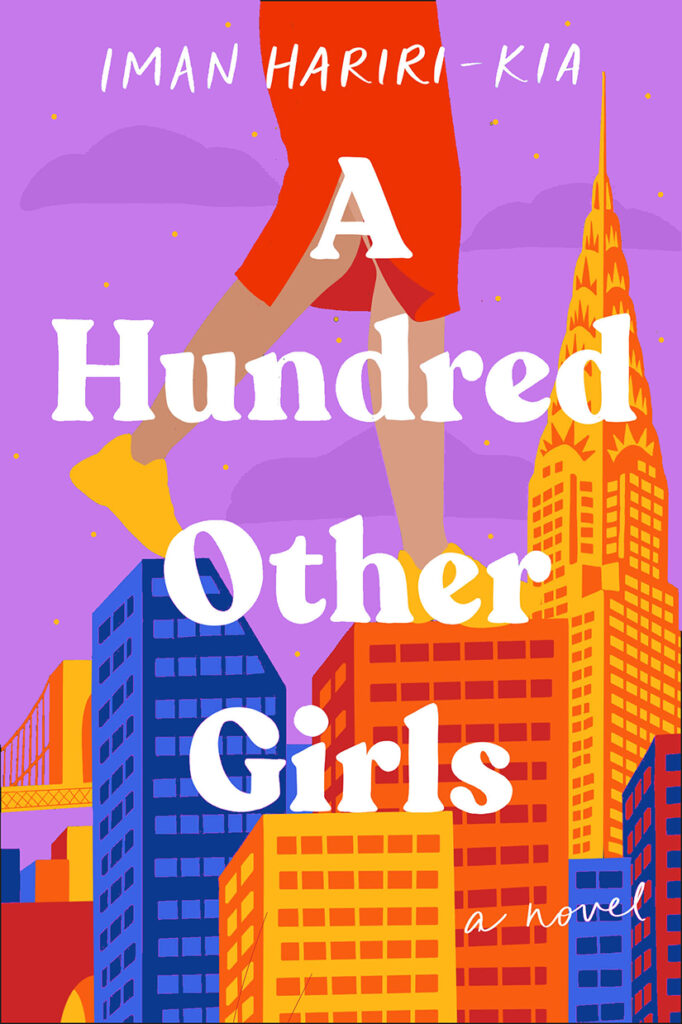Iman Hariri-Kia is the debut author of “A Hundred Other Girls,” which was published in July 2022.
Hariri-Kia is a 27-year-old from New York of Iranian decent. She was the recipient of the Annabelle Bonner medal and is a journalist who covers topics ranging from relationships to sex to identity for publications such as New York Magazine, Cosmopolitan, Vogue, The Cut, and Bustle among others.
In the next five to 10 years, I believe the industry will look entirely different from what it has transformed into now.
Iman Hariri-Kia
Her debut novel has been compared to a modern day “The Devil Wears Prada” by Lauren Weisberger. “A Hundred Other Girls” is a story about the modern media landscape and what it takes to get a seat at the table as a budding journalist. The novel follows Noora, a Middle-Eastern American journalist, as she does whatever it takes to get her dream job at Vinyl magazine. When she scores a job as assistant to the editor-in-chief of the print magazine, she soon realizes that print and digital are at war. Print is struggling to stay relevant, while the digital team does all they can to stay on top of the trends and be considered “woke”. The editor-in-chief, Loretta, is a nightmare—she’s always demanding that Noora is “on call” and sends her on the most lavish requests, most of which have nothing to do with actual writing or journalism.
The cast of characters in this novel will have you laughing, crying, and rooting for each of them—no matter what side of the war they’re on. Saffron, who becomes Noora’s bestie at work and works on the digital side, is a great representation of the LGBTQ+ community—something that wasn’t depicted in 2003’s “The Devil Wears Prada. In this story we also get a peek at the Indian culture, customs and foods through Noora’s relationship with her sister. But, that’s not all. If you’re wondering if there are any love scenes? Hariri-Kia served it up with a hot IT guy and a few page-turning encounters.
However, “A Hundred Other Girls” isn’t your typical rom-com. In this story, we are rooting for Noora and her happiness and success. This exploration of the changing media industry takes the reader on an insider dive through the ins and outs of the magazine world. (One, that as a journalist myself who has worked for both print and digital, I can attest to.) It’s a story about a young woman getting to know herself and coming in to her own. It’s a story of friendship and a family support system. It’s a story about believing in yourself, betting on yourself, and following your path—even if it leads to something other than what you hoped for. In the media industry, editors often say how you should be lucky to have your job, because there are a hundred other girls dying to replace you. This is the focus that Hariri-Kia tried to showcase, a sentiment I’ve heard myself many times. But, as she points out, “The biggest takeaway of this novel is that there aren’t a hundred other girls waiting to take your place because you are a person, not a job,” says Hariri-Kia.
Q&A
Where did the inspiration for this book come from?
I was inspired by every role I’ve ever worked in media, from an entry level assistant to top editor. I hoped to paint a picture of departments fighting for resources and generational editors taking swings in the dark in order to remain relevant. And, I wanted to do so through the point-of-view of the hungry, talented, undervalued marginalized employees.

Do you feel that print is dead as it is portrayed in the novel?
Personally, I will always have a soft spot for print. I absolutely adore the experience of reading a print magazine—the smell, the feel of turning the pages. But, I think that media, as an industry, is broken—in that there is so much content, but no one can figure out a sustainable way to both serve the reader and make money. In the next five to 10 years, I believe the industry will look entirely different from what it has transformed into now. And while few print properties may survive, that will be because of audience demand and independent funding.
Unfortunately, that means most print magazines will be forced to fold. If audiences aren’t committed to a publication and can access most of the information and content online, why would they pay to subscribe? And if audiences aren’t subscribing, why would advertisers pay to take up ad space? This, ultimately, will be the majority of print’s downfall.

Is this novel based on your personal experiences?
I was definitely inspired by my own personal experiences, the anecdotes of my friends and coworkers, industry gossip, and news stories. However, there isn’t a single brand, workplace, or person cherry picked from real life and placed in the novel—its world is entirely fictionalized.
You’re novel, "A hundred Other Girls," is often described as a modern day “Devil Wears Prada,” how do you feel about that comparison?
While I appreciate the comparison and am a huge fan of “The Devil Wears Prada,” the crux of my novel is a generational turf war between an old-school elitist print team and a young, woke for the wrong reasons digital team. I prefer to think of “A Hundred Other Girls” as an update on the world that the “The Devil Wears Prada” was set in, aka the media industry as a whole. After all, “The Devil Wears Prada” came out 20 years ago (!!!) and predated the Digital Media Boom. Imagine how much easier it would be to get an ARC [Advanced Reader Copy] of that Harry Potter book for an EIC today?!
One of the biggest differences between your novel and “The Devil Wears Prada,” which was published in 2003, is the rise of digital media. Being published almost 20 years apart they’re geared to two different age groups. How do you think the rise in digital media has shaped the publishing industry today?
God, the Digital Media Boom has changed the Industry in so many ways it’s impossible to list them all… I’ll start with the major positives: Digital Media has made information accessible to all people, which in turn has given them power. It has also given so many people a sense of community, from across the country and even the globe. Digital Media can help to organize movements, equalize opportunity and access, support independent and marginalized artists and more.
But Digital Media has also led to more content being produced than ever, which means that all companies are fishing from the same, tiny pond for news stories. Additionally, the biggest way that Digital Media companies make money (there’s also branded content, branded events, and more… but I don’t have time to get into that) is by selling Digital ad space. That ad space’s value is dependent on how much traffic (or clicks) an article gets. The two biggest ways to drive an article’s traffic is on Social Media or by catering to the Google Algorithm by optimizing it for search engines. That means that Digital Media employees are often encouraged to slap outrageous social headlines on articles with the intention of evoking enough emotion that a reader will have to click in, and that all publications are competing to publish as many of the fastest, key-word heavy SEO articles to rank high by Google, as they can. Many people are familiar with the term “clickbait” but very few understand why it’s so prevalent: This is the reason.
But let me ask you a question: What would happen, if say, the Google Algorithm were to drastically change overnight or TikTok was shut down in the U.S.?
Another big difference between the two books is that yours is filled with a cast of very diverse characters, which correlates to the current society. Was that intentional? What did you hope to accomplish with your characters?
I painted the world of “A Hundred other Girls” in the vibrant shades through which I experienced the industry, and further, New York City: full of rich cultural diversity. There are characters of all races, genders, sexualities, abilities, cultures, classes, and more. But their plotlines do not center, nor exploit, their identities. As Noora navigates clickbait, content mills, cancel culture, and the difference between tokenization and true representation, the reader will, too.
Working in media, I witnessed a lot of marginalized people get hired during the great Digital Boom, in the name of diversity and inclusion. But the majority of these writers—who were talented, hungry, and grateful for a seat at the table—were only trusted to write stories about their own trauma, rendering them a symbol of their marginalized group. AAPI [Asian Americans and Pacific Islanders] writers were relegated to AAPI heritage month stories. Black writers were asked to educate others about racism. Queer writers were told to repeat their “coming out” story again and again. But these writers were rarely given opportunities to write about anything else, whether that be the environment or the latest season of The Bachelor. Additionally, they were underpaid, overworked, and told not to question their situation, to be grateful for the opportunity. They had to decide between two evils: A complete lack of representation, or the exploitation of said representation—a.k.a. tokenization.
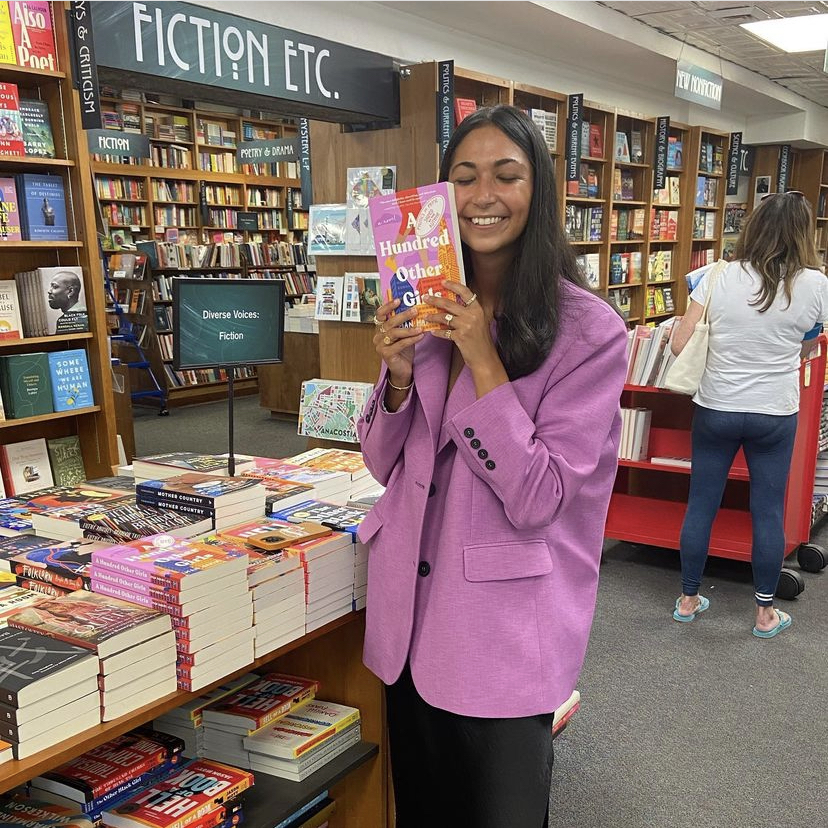
Are your characters based on real people?
The biggest takeaway of this novel is that there aren’t a hundred other girls waiting to take your place because you are a person, not a job.
Iman Hariri-Kia Tweet
How do you select the names of your characters?
Some of the names are Easter eggs from my own life! For example, my late grandfather’s name was Noori, and he inspired Noora. Saffron is a spice often used in Persian cooking. Those are just a couple examples!
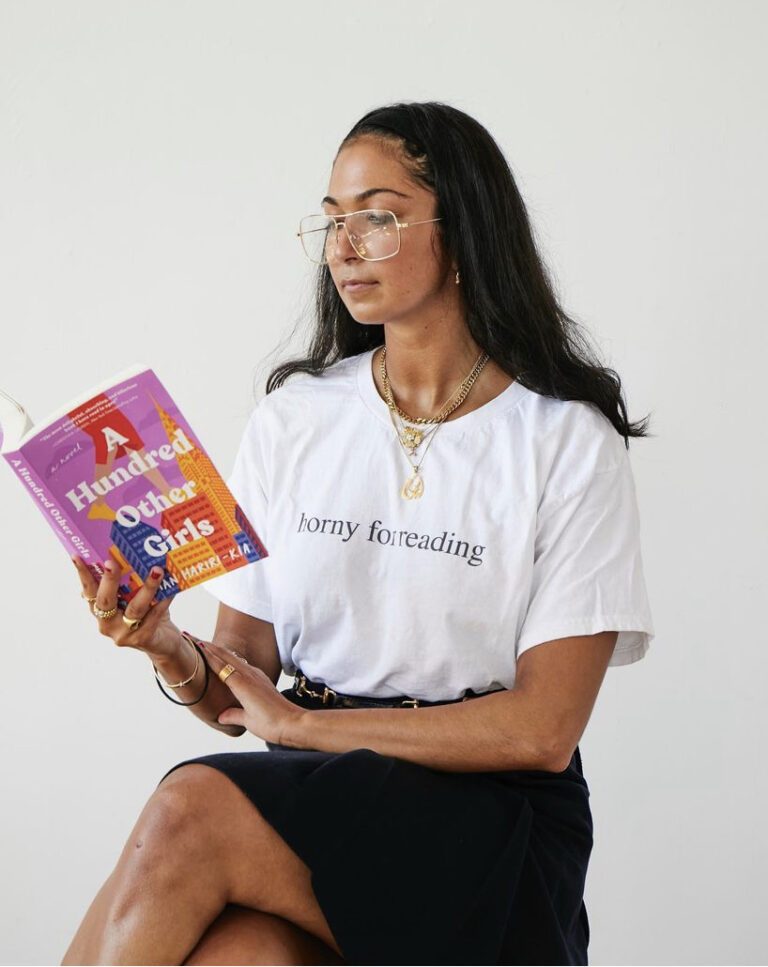
How much research went into your writing process?
So much! I spent about five years ruminating on this book before I actually sat down to write it. I also read a lot of great media memoirs and novels. If you’re looking for something to scratch the itch, I highly recommend Cat Marnell’s “How To Murder Your Life.”

Can you tell us a little about your writing process? How do you work on making an idea into a book? When is your favorite time of day and place to write?
Sure! I start by daydreaming about the story and its characters, which can look like random Notes App etchings and VoiceNotes to self. Then I sit down and freewrite the entire synopsis, in sort of a stream of consciousness style, refusing to hold anything back. Once I’ve done that, I go back and reread it, cleaning up the plot and making sure the story has narrative structure. Then, I divide structure and beats into chapters. I typically write ~80K word novels, so I aim for about 30-32 chapters, 2500-300 words each. Then I create an Excel Doc with deadlines, word count goals, notes on color, etc.
My favorite place to write is on my couch, at night, with a glass of wine. I find that setting lowers my inhibitions and keeps me from overthinking!
Did you plan/outline the novel before writing (are you a plotter), or did you come up with ideas as you wrote (are you a pantser)? Or, are you a plantster—you do a little of both?
How long was the writing process for you from concept to publishing?
As I mentioned previously, I’d been ruminating on this concept since 2017, but from sitting down to write the first word of my first chapter, to seeing my book on shelves, the process took about three years.
What did you hope to accomplish with the publishing of this novel?
This novel is a real case study on what it means to chase your dreams. It’s for the people who arrived at a job with stars in their eyes and have been subjected to workplace toxicity, unethical hours and pay, and burnout, because they’ve been told that they’re “just lucky to be here.” The biggest takeaway of this novel is that there aren’t a hundred other girls waiting to take your place because you are a person, not a job. Who you are has inherent value. Nobody can do exactly what you do because no one can be exactly who you are. And you should never sacrifice your morals, ethics, or mental and physical health for a workplace that makes you feel otherwise. You can chase your dreams outside of a corporate structure and your people will still find you.
What advice would you give other writers or those looking to write a book with no prior book writing experience?
Before you can talk yourself out of it, create a realistic schedule and make yourself complete that first draft. Even when you start to question the characters and your writing. Especially when you start to resent the plot. The real power in writing is pushing through and past that slog of negative resistance and finishing that draft. Then you can book and revise your work. Trust me: It’s much better to have a messy manuscript than a perfect paragraph. The hardest part of writing a book is actually writing the book.
What do you do when you have writer’s block?
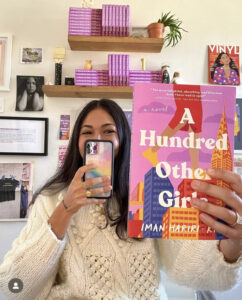
First, I daydream in low-stakes situations: In the shower, on the subway, etc. The mind is sometimes more creative when it’s distracted by other things, rather than when you’re sitting at our desk, staring at a blank document. Don’t forget to write down every idea, even the bad ones!
Next, I’ll talk it out with a loved one. Sometimes, voicing plot holes or character issues out loud can help you to notice something you didn’t previously or pinpoint what’s not working. Additionally, if you’re too close to your own story, an outside perspective might be really, really helpful.
Then, read. Read everything that excites you! Inside and outside your chosen genre. Fantasy, Romance, Autobiography—you name it. Read while you write. In my experience, it makes your writing so much stronger.
Finally, make yourself write through it. Set a timer and deadline, get yourself an adult beverage, and hammer out that word count. It doesn’t matter if you hate it. Later on, you can go back and fix it. If it feels like you’re trudging through mud, you’re doing it right!
Also take solace in the fact that this happens to literally every professional writer I know. Writing sucks. I love it. I hate it. It’s the best.
What are you reading now?
I got back from vacation yesterday, and I read “The Great Undoing” by Jessa Hastings (so good), “The Co-Op” by Tarah DeWitt, “Misfit” by Elle Kennedy, “Things We Never Got Over” by Lucy Score (not overrated IMO), and “Fraud Squad” by Kyla Zhao (a debut!).
Now I’m looking for my next read, while also rereading one of my favorite fantasy series and taking notes (lol) and dabbling in some Dramione fanfic (always).
What’s your favorite book?
I mean, that’s an impossible question. The two series that shaped my writing style more than anything else are “The Princess Diaries” by Meg Cabot and “The Clique” by Lisi Harrison. Nora Ephron and Joan Didion are my literary idols. Does that answer count or is it a cop out?
Is novel writing your full-time career or do you do something else, if so, what?
I left my full-time job as an editor right before the novel came out, so I’m writing full-time. I’m a freelance journalist, and have been published in NY Mag, Cosmo, Vogue, and more. I also do a little brand consulting and social media tinkering, but it’s now mainly fiction writing for me 🙂 I consider myself very lucky!
Are you currently working on another novel? If so, can you tell us anything about it yet? Do you want to publish more books?
AH I can’t tell you all the tea yet. BUT, I’ve sold two more adult novels to my publisher and I’m shopping around something additional and exciting as well.
My second novel will be coming out early next year and if you loved the chaos, humor, subtle cultural commentary, and rep in “A Hundred Other Girls”… picture that, on steroids. Think: Inventing Anna meets Killing Eve. Meets Search Party meets Tiger King. IG followers and Newsletter Subscribers will get the news first!!!!
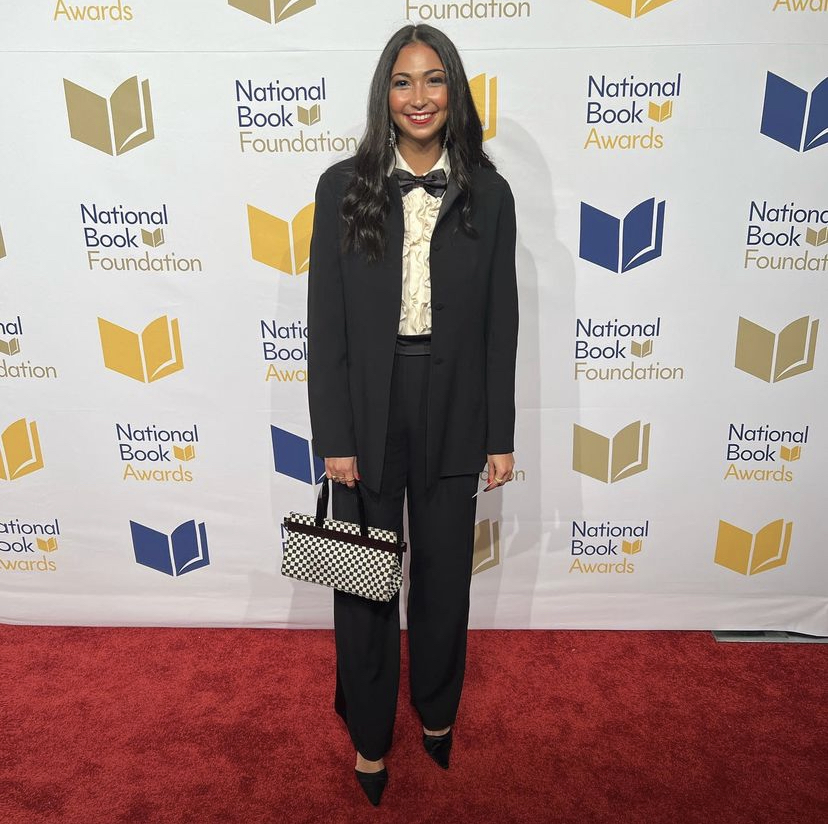
If you want to follow Iman Hariri-Kia, you can check her out on Instagram at @imanharirikia or check out her website at imanharirikia.com. And, don’t forget to sign up for her newsletter, Cherry Picked.


